Share
Discover if debt consolidation loans are worth it for Australian borrowers. Expert analysis of pros, cons, and decision-making criteria.
Does managing multiple debts feel like you’re constantly spinning plates? Credit card payments due on different dates, personal loan repayments with varying interest rates, and car finance obligations can quickly overwhelm even the most organised Australian households. With nearly $20 billion in credit card debt alone accruing interest across the country, the promise of debt consolidation loans sounds incredibly appealing: roll everything into one simple payment and save money.
But does debt consolidation truly deliver on these promises? The answer isn’t straightforward. While consolidation offers genuine benefits for some borrowers, it becomes a costly trap for others. Your success depends on your specific financial circumstances, the loan terms you secure, and crucially, whether you’re ready to address the spending habits that created the debt problem initially.
This comprehensive analysis examines both the compelling advantages and significant risks of debt consolidation loans in Australia. You’ll discover when consolidation makes financial sense, when it doesn’t, and how to evaluate whether this strategy aligns with your path to financial freedom. By understanding the complete picture, you can make an informed decision that truly serves your long-term financial wellbeing.
Understanding debt consolidation loans
A debt consolidation loan is a personal loan specifically designed to pay off multiple existing debts, combining them into one new loan with a single interest rate and repayment schedule. Rather than managing several different creditors with varying terms and due dates, you deal with just one lender and one monthly payment.
The mechanics are straightforward: you apply for a personal loan large enough to cover all your existing debts, use those funds to pay off your current obligations, then focus on repaying the new consolidated loan. In Australia’s current market, debt consolidation represents the primary reason people seek personal loans, with over half of all applications (51.92%) specifically for consolidating existing debt. The average amount borrowed sits at $15,302, reflecting the typical debt loads Australian households are managing.
Unlike other personal loans used for purchases or expenses, debt consolidation loans serve a purely financial restructuring purpose. They don’t add to your overall debt burden initially, but rather reorganise it under potentially more favourable terms.
Types of debt that can be consolidated
Most forms of unsecured debt can be rolled into a consolidation loan. Credit card debt represents the most common target, particularly given that standard credit card rates in Australia average 20.99% as of 2025. With nearly $20 billion in credit card debt accruing interest across the country, the potential savings from consolidating high-interest plastic debt into a lower-rate personal loan can be substantial.
Personal loans from multiple lenders can also be consolidated, especially when you’re dealing with different rates and terms that make budgeting difficult. Car loans, while sometimes secured by the vehicle itself, can be included if the consolidation loan offers better overall terms. Store cards, Buy Now Pay Later accounts, and even some outstanding bills or debts that have been passed to collection agencies may be eligible for inclusion.
The key consideration is whether the new loan terms genuinely improve your situation. Consolidating a low-interest car loan at 8% into a personal loan at 15% rarely makes financial sense, even if it simplifies your payments.
How the consolidation process works
The process begins with a thorough assessment of your current debts, including balances, interest rates, and remaining terms. This information helps determine the total amount needed and whether consolidation will deliver genuine benefits. Once you’ve identified a suitable lender and loan product, the application process follows standard personal loan procedures, including credit checks, income verification, and assessment of your overall financial position.
Upon approval, you use the loan funds to immediately pay off your existing debts, then close those accounts to prevent further spending. From that point forward, you make regular payments on the consolidation loan until it’s fully repaid. The success of this strategy depends heavily on your discipline in not accumulating new debt on the accounts you’ve just cleared.
Financial benefits that make consolidation attractive
The most significant advantage of debt consolidation often lies in the potential for substantial interest savings. When you’re carrying debt across multiple credit cards charging 18-22% annually, consolidating into a personal loan with rates between 7-22% can dramatically reduce your interest burden.
Lower interest rates save money
The mathematics of interest rate reduction can be compelling. When credit cards charge 20% annually and you can secure a personal loan at 12%, the difference translates directly to money saved. Making minimum payments on high-interest debt can extend repayment timelines for decades while accumulating substantial interest charges.
Consolidating multiple high-interest debts into a single lower-rate loan transforms both your monthly payments and total costs. The potential savings become particularly significant when dealing with credit card debt, where Australian standard rates average 20.99% compared to personal loan rates ranging from 7-22%.
The key lies in securing a consolidation loan with an interest rate meaningfully lower than your current debt average. Even a reduction of 3-5 percentage points can translate to thousands of dollars in savings over the loan term.
These savings represent genuine money that stays in your pocket rather than flowing to lenders, making the difference between years of debt payments and achieving financial freedom sooner.
Simplified repayment management
Beyond the financial benefits, consolidation dramatically simplifies your financial administration. Instead of tracking multiple due dates, minimum payment amounts, and varying interest rates, you manage one predictable payment to one lender. This reduction in complexity often leads to fewer missed payments and late fees, which can quickly erode any interest savings you’ve achieved.
The psychological benefit of simplification shouldn’t be underestimated. Many borrowers report significant stress relief from knowing exactly when their payment is due and how much they need to pay each month. This clarity makes budgeting more straightforward and helps you maintain better control over your financial situation.
Single-payment management also reduces the administrative burden of debt management. No more juggling different online portals, remembering various payment dates, or worrying about which payment might overdraw your account.
Improved cash flow and budgeting
Debt consolidation can improve your monthly cash flow in two ways. First, securing a lower overall interest rate means more of each payment goes toward reducing the principal balance rather than servicing interest. Second, extending the repayment term can reduce monthly payment amounts, though this strategy requires careful consideration of total costs.
For households experiencing cash flow pressure, the immediate relief of lower monthly payments can provide breathing room to stabilise finances. This improved cash flow creates opportunities to build emergency savings, invest in income-generating activities, or simply manage day-to-day expenses without the constant stress of stretched finances.
Better cash flow also enables more effective budgeting. With predictable loan payments, you can plan other expenses and financial goals with greater confidence, leading to improved overall financial management.
Credit score improvement opportunities
When managed properly, debt consolidation can positively impact your credit score over time. By making consistent, on-time payments on the consolidation loan, you demonstrate reliable credit behaviour that credit reporting agencies view favourably. Additionally, paying off credit card balances immediately reduces your credit utilisation ratio – the percentage of available credit you’re using – which is a significant factor in credit score calculations.
Lower credit utilisation ratios, ideally below 30% and preferably under 10%, can boost your credit score relatively quickly. As your credit score improves, you become eligible for better interest rates on future borrowing, creating a positive cycle of improving credit conditions.
The structured repayment schedule of a personal loan also helps build a positive payment history, demonstrating your ability to manage instalment debt responsibly over extended periods.
Why debt consolidation can backfire
Despite the apparent benefits, debt consolidation carries substantial risks that can leave borrowers worse off than when they started. Understanding these pitfalls is crucial for making an informed decision about whether consolidation suits your situation.
The longer-term trap
One of the most dangerous aspects of debt consolidation involves extending the repayment term to achieve lower monthly payments. While reducing your monthly obligations provides immediate relief, you often pay significantly more in total interest over the loan’s life.
This longer-term trap is particularly insidious because the immediate benefit obscures the long-term cost. Many borrowers focus on monthly payment relief without calculating total repayment amounts. The result? Decisions that feel beneficial short-term but prove expensive over time.
Extended loan terms can add years to your debt repayment journey. What might have been manageable debt with aggressive payments becomes a long-term financial burden that limits your ability to build wealth or achieve other financial goals.
Understanding total cost versus monthly payment relief is crucial for making informed consolidation decisions.
Hidden costs and fees
Debt consolidation often involves various fees that can erode the anticipated savings. Establishment fees for the new loan, ranging from $200-600 or more, represent immediate costs that reduce your net benefit. Some existing loans may impose early exit penalties for paying them off before term, adding to the upfront cost of consolidation.
Ongoing fees on the new loan, such as monthly account-keeping charges, can also impact the total cost comparison. When evaluating consolidation options, you must factor in all fees across both your current debt situation and the proposed new loan to determine genuine savings.
Application and processing fees, valuation costs for secured loans, and potential mortgage registration fees for loans secured against property can quickly add up. These costs might not eliminate the benefits of consolidation, but they reduce the net advantage and should inform your decision-making.
The dangerous spending cycle
Perhaps the most significant risk of debt consolidation is the psychological trap it can create. Paying off credit cards and other revolving credit facilities doesn’t automatically close those accounts. Many borrowers find themselves with cleared credit card limits alongside their new consolidation loan, effectively doubling their potential debt capacity.
Without addressing the underlying spending behaviours that created the original debt, many people gradually rebuild balances on their cleared credit cards while continuing to service the consolidation loan. This “double debt” scenario leaves borrowers significantly worse off than before consolidation, with higher total debt levels and monthly payment obligations.
The false sense of progress that consolidation creates can be particularly dangerous. Clearing multiple debts feels like achievement, but if spending habits remain unchanged, the consolidation becomes merely a stepping stone to deeper financial trouble rather than a path to debt freedom.
Secured loan risks
Some consolidation loans are secured against assets like your home or car to achieve lower interest rates. While this can reduce borrowing costs, it fundamentally changes the risk profile of your debt. Unsecured debts like credit cards, while carrying higher interest rates, don’t threaten your home if you experience repayment difficulties.
Converting unsecured debt into secured debt puts your most important assets at risk. If financial circumstances change and you struggle with repayments, you could face foreclosure or repossession actions that weren’t possible with your original unsecured debts. This risk escalation might not justify the interest rate savings, particularly for borrowers whose financial situations are already strained.
Secured consolidation loans also typically involve additional legal and administrative costs, from property valuations to mortgage documentation, that increase the overall expense of the consolidation process.
Credit score impacts
While successful debt consolidation can improve credit scores long-term, the initial impact is often negative. The hard credit inquiry required for loan approval temporarily reduces your credit score, and the sudden change in your credit profile – paying off multiple accounts and opening a new significant loan – can cause short-term score fluctuations.
If you subsequently struggle with the consolidation loan payments or rebuild debt on cleared accounts, the credit score damage can be severe and long-lasting. Multiple missed payments on a large consolidation loan typically create more credit damage than missing occasional payments on smaller individual debts.
The credit reporting implications of debt consolidation extend beyond just payment history. The change in credit mix, account ages, and total debt levels all influence your credit score in ways that might not become apparent for several months after consolidation.
Making the right decision
When debt consolidation makes sense
Debt consolidation works best when specific circumstances align to create genuine financial benefits. The most compelling case involves multiple high-interest debts, particularly credit cards charging 18% or more annually.
Ideal Consolidation Scenarios:
- Multiple debts with interest rates above 15%
- Stable employment and regular income
- Commitment to changing spending behaviours
- Ability to secure rates 5-8 percentage points below current average
- Good credit score qualifying for favourable terms
- Clear timeline for becoming debt-free
Successful consolidation requires more than just lower interest rates. You need the discipline to avoid rebuilding debt on cleared accounts and the financial stability to meet new payment obligations consistently.
When these elements align, consolidation becomes a powerful tool for reducing interest costs, simplifying financial management, and accelerating your path to debt freedom.
When to avoid consolidation
Several situations make debt consolidation inadvisable or potentially harmful:
Avoid Consolidation When:
- Your primary goal is reducing monthly payments without addressing spending problems
- Income or employment situation is unstable
- Total consolidation costs exceed current debt costs
- Alternative solutions offer better terms
- You haven’t addressed underlying financial behaviours
If your financial situation is already precarious, taking on additional debt obligations increases rather than reduces your financial risk. Sometimes balance transfer credit cards, hardship arrangements with current creditors, or debt management plans provide better solutions than consolidation loans.
When the interest rate or total cost of consolidation doesn’t represent genuine improvement over your current situation, the administrative complexity and potential risks aren’t justified.
Honest self-assessment of your spending habits and financial discipline is crucial before proceeding with any consolidation strategy.
Important evaluation criteria
Successful evaluation of debt consolidation requires systematic analysis rather than gut feelings or attractive marketing promises.
Essential Evaluation Steps:
Total Cost Analysis: Calculate the complete cost of your current debts over their remaining terms, including all interest and fees. Compare this to the total cost of the proposed consolidation loan over its full term.
Effective Interest Rate: Focus on the true rate you’ll pay, including all fees and charges, not just the advertised headline rate. A loan with a 12% interest rate plus significant fees might cost more than a 14% loan with minimal fees.
Term Length Impact: Shorter terms generally result in higher monthly payments but lower total interest costs. Longer terms offer payment relief at the expense of higher total costs. Choose terms that balance affordability with cost-effectiveness.
Fee Structure Assessment: Include all upfront costs, ongoing charges, and potential penalties in your analysis. Some loans impose early repayment fees that limit your flexibility to accelerate debt payoff.
Cash Flow Analysis: Ensure the new payment fits comfortably within your budget while allowing for emergency savings and other financial goals.
This methodical approach helps you make decisions based on financial reality rather than emotional relief or marketing appeal.
Working with professionals
The importance of expert guidance
Navigating debt consolidation decisions involves complex financial calculations and risk assessments that benefit significantly from professional expertise. Mortgage brokers and financial advisors bring knowledge of market conditions, lender criteria, and loan structures that individual borrowers typically lack.
Professional guidance becomes particularly valuable when evaluating multiple consolidation options or when your financial situation includes complications like irregular income, existing mortgage obligations, or credit history issues. Experienced brokers understand how different lenders assess applications and can guide you toward products that match your specific circumstances.
Benefits of using mortgage brokers
Mortgage brokers provide access to multiple lender options that individual borrowers might not discover independently. Their relationships with various financial institutions often enable them to negotiate better terms or identify loan products specifically suited to debt consolidation purposes.
Professional assessment of suitability helps you understand whether consolidation genuinely benefits your situation or whether alternative strategies might serve you better. Brokers can perform comprehensive cost-benefit analyses that account for all fees, charges, and long-term implications of different options.
Ongoing support throughout the application and settlement process ensures that consolidation proceeds smoothly and that you understand all obligations and opportunities associated with your new loan arrangement.
Questions to ask potential lenders
When evaluating consolidation options, specific questions help you understand the true cost and suitability of different proposals. Request detailed breakdowns of all interest rates, fees, and charges, including scenarios for different loan terms and amounts.
Understand the lender’s policies regarding additional payments, early repayment, and loan modifications if your circumstances change. Some lenders offer flexibility that can significantly benefit borrowers who want to accelerate debt repayment or who might need payment adjustments in the future.
Clarify the application process, approval criteria, and timeline for settlement to ensure that consolidation can proceed within your required timeframe and that you meet all necessary requirements.
Taking control of your financial future
Debt consolidation loans represent powerful financial tools when used correctly, but they’re not universal solutions to money problems. Success hinges on three critical factors: securing genuinely beneficial terms, maintaining disciplined spending habits, and integrating consolidation into a broader financial improvement strategy.
The path to successful debt consolidation starts with brutal honesty about your financial situation and spending patterns. Without addressing the behaviours that created your debt burden, consolidation becomes merely a temporary reprieve rather than a lasting solution.
When consolidation aligns with realistic financial goals and disciplined money management, it can provide the foundation for achieving debt freedom and building long-term wealth. However, rushed decisions based on payment relief alone often lead to worse outcomes than the original debt situation.
Your Next Steps:
Before making any consolidation decision, complete a thorough analysis of your total costs, evaluate multiple loan options, and honestly assess your readiness for the financial discipline required. Professional guidance can help navigate complex decisions and identify solutions tailored to your specific circumstances.
Contact Attain Loans today for expert assessment of your debt consolidation options. Our experienced team provides personalised guidance to help you choose the financial strategy that truly serves your long-term interests, not just temporary payment relief.
Remember: debt consolidation is a financial tool, not a financial cure. Its effectiveness depends entirely on your commitment to responsible financial management and your determination to build lasting financial health.
Further questions
How much can I save with a debt consolidation loan in Australia
What credit score do I need for debt consolidation approval in Australia
Can I consolidate debt if I have a mortgage in Australia
What happens to my credit cards after debt consolidation in Australia
How long does the debt consolidation process take in Australia
This is general information only and is subject to change at any given time. Your complete financial situation will need to be assessed before acceptance of any proposal or product.





